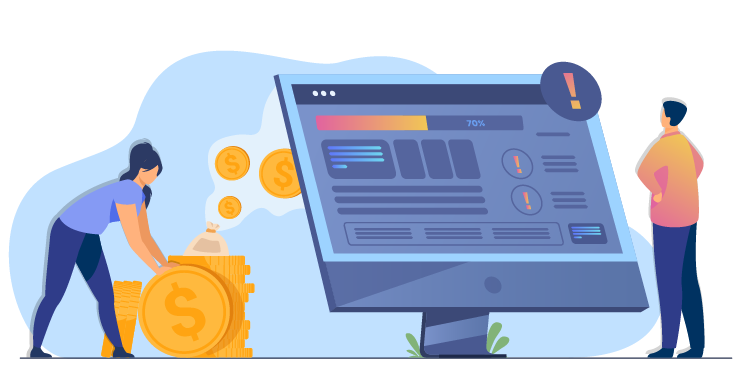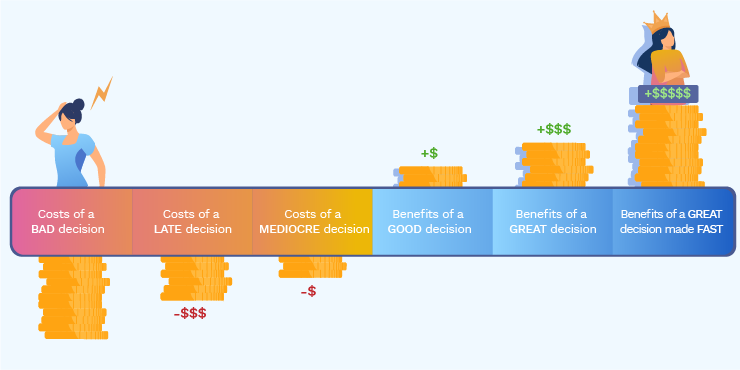Upgrade Your Promotions Strategy in the AI-Era through Shopper’s Data
Upgrade Your Promotions Strategy in the AI-Era through Shopper’s Data
Here is an eye-opener for most retailers and brands out there – a large percentage (30-40%) of your current promotions may not actually be helping you to accomplish your business objectives. In fact, they may be working against you. When you objectively analyze your promotions strategy, you will learn that some promotions are not helping you to drive traffic, drive revenue, or even drive margin. They may even be encouraging counter-productive behaviors like cherry-picking, pantry loading, and offer stacking.
When it comes to mass promotions in particular, success can be an illusion that is difficult to dissect and analyze. Most retailers and brands expect, assume, and sometimes even see a semblance of success – but are never sure of how successful their approach to mass promotions has actually been. What is even worse is that if promotions are not working, the cause of failure is not always evident.

Without looking at the big picture, selecting the best success criteria for promotions can generate a lot of internal debate. What to promote, when to promote, and how best to promote remain the essential questions. The three most common “old school” reasons for promoting are:
- Repeating something from the past where an item or set of items was promoted at the same time and in the same way last year.
- Being motivated by the allowances or rebates funded by the brands that sponsor these promotions. Despite the brand funding, it is not uncommon for some promotions to be out of step with the retailer’s own strategy, let alone the needs of shoppers.
- Retailers execute promotions because they see their competitors promoting the identical or similar items, and they assume that those promotions must be successful otherwise why would that competitor run the promotion in the first place? This can be a race to the bottom. Still today, many retailers have ad war rooms where the print circulars from competitors are displayed each week, as to infer what do they know that we don’t know?
This problem of ineffective mass promotions has been plaguing retailers and brands for many years. Without a data-driven approach, promotion evaluations are often driven unintentionally by conformity bias. This means that the lack of objective data that confirms strategic alignment of promotions can make a failed promotion look successful and vice-versa. Thus, an objective data-driven, and strategy-driven approach is essential for enduring success around these mass promotions.
Being data-driven and strategy-driven alone is not enough in today’s market. Even organizations that are well-equipped with robust shopper data face data and people siloes, which can result in disjointed execution, crippling the ability to execute a successful promotions strategy.
Considerations for Better Promotion Planning
An effective promotions strategy should establish clear success criteria, whether that be to drive revenue, drive traffic, drive profit, or drive basket composition, all while simultaneously pleasing targeted as many customers as possible.

To elaborate, at a macro level, promotion planning can be broken into two main areas:
- Mass Promotions – these promotions are available to all shoppers and can include 1.) digital or print based circulars, mailers or flyers which may run on weekly or monthly cycles, 2.) temporary price reductions (TPRs), which may run over longer, multi-week time periods, and 3.) brand sponsored coupons. Mass promotions are typically vendor funded through allowances, rebates, or coupon redemption.
- Personalized Promotions – these can include segment-based or individually-targeted offers and they tend to be more prevalent in retailers with strong loyalty programs. Segments are generally defined in three ways; 1.) Shopper Spend, Category Participation, Recency, and Frequency, or 2.) they can be based on affinity programs such as behavioral preferences evident in the data like Natural/Organic, Baby Products, Vegetarian, or other preferences, or 3.) segments can also be defined by lifestyle or demographic factors such as Age, Affluence, Ethnicity, Culture, Gender, Marital Status, Parenthood Status, Employment Status, Pet Status, etc.
Whether you are doing Mass Promotions or Personalized Promotions, these decisions need to be based on three key considerations:
- Knowing your market
- Knowing your customers
- Knowing your brand partners
#1 Knowing your market
Each store, region and channel present their own set of unique promotional planning considerations. These challenges have only become more evident in today’s hyper-competitive market. Several factors drive this market differences:
Understanding Competition
Suppose like many retailers, you are running a retail chain in a region that is dominated by a fierce, more-sizable everyday low-price leader. In this environment, your promotional decisions can be the most meaningful contributor to your business results. Without the low-price advantage, the right promotions may simply be the only way to level-the-playing-field in your region.
When you cannot compete toe-to-toe on price or on the breadth of your assortment, running ineffective mass promotions designed to match competition is a futile exercise. Instead, it is essential that you execute a promotions strategy that is shopper-centric and one that emphasizes your unique value proposition. Promoting signature items, exposing better quality, or offering local products could all be influential factors that enable you to attract more shopper engagement.

Instead of offering exclusively mass promotions on hundreds or thousands of items to everyone, personalized offers that are individually relevant to specific shoppers or to shopper segments can be far more effective to gain shopper wallet share while being more targeted with your promotional investments. Some shoppers are clearly more drawn to retailers that show that they know and understand the shopper’s needs.
COVID-19 has had a material impact on retail promotions strategy rendering some promotions ineffective. The time is ripe for retailers to step-up their game and earn market share while shoppers prioritize convenience and safety over price. With fewer shopper trips being made, limited mobility, and shifting spending towards staples and necessities, consumers are gravitating towards local, full-service retailers.
Understanding your customer and leveraging their valuable purchase history is the best source of information on these alternatives and coming up with solutions to deal with the promotional challenge. For example, it is wasteful to promote a given item where your shopper data clearly shows a low propensity to switch brands. Expecting to switch brand loyal shoppers to another choice may be futile no matter how attractive the promotion may be. Instead, in these brand or product loyal areas, the most effective promotions will generally be those that will expand the basket with complementary items versus trying to alter longstanding preferences.
#2 Knowing your Customers
Knowing your customer, and personalizing promotions for them is increasingly considered table stakes for retailers who wish to succeed and grow.
Social media and e-commerce sites like Facebook and Amazon have made personalization the norm. Shoppers expect nothing less, and they expect you to know their preferences and help them identify the best products and prices for their unique needs. It is only natural for today’s shoppers to expect better, more individually relevant deals because of their loyal patronage. Personalized experiences based on historical shopping data is one of the best ways this can be achieved by retailers equipped with loyalty and CRM systems.
Understanding localized cultural and demographic differences
Every trading area and region will have localized cultural and demographic differences. A great promotions strategy will recognize and be relevant to these differences.

Convenience could be a higher priority than price especially in high service neighborhood markets. Targeted, localized promotions can be built around better shopping experiences, ease of ordering, and speedy home-deliveries of goods, to entice the customer whose needs are not being fulfilled by other retailers. If you have a set of customers who frequently shop with you, it is prudent to dig into their shopping history, ensuring that you fill promotional blind spots important to these customers.
Conducting personalization at two levels – at the segment or individual level
Segmented, Personalization of Mass Promotions: Let us face it, mass promotions like those you find on the front page of a website or in a weekly circular are not going anywhere. Temporary price reductions (TPRs) and coupons will also continue to shape the shopping experience. That said, with hundreds if not thousands of concurrent offers at any given time, leading retailers are getting far more sophisticated in curating offers that are individually relevant, excluding those that are not relevant. Customers tell you every day what they want through the items they purchase, when they purchase and the channels that they use. This data can be used to determine which products should be promoted in a specific region, when, and at what price point.
Individual 1:1 Personalization: Providing a unique and targeted offer to a customer or small group of customers, based on their purchase history is the best way to illustrate that “you know your customers.” For example, rather than running a series of generic promotions on pet supplies, can you provide unique offers on the brands their pets like?
Beyond just features the brand, you can even personalize the deal and level of discount for individual customers, offering just enough of a discount to incentivize them to purchase it. Offering the right level of discounts to those who need it or deserve it is key, as reaching out to everyone would not only increase your marketing costs but may also annoy those who are not going to benefit by it.
There is no one-size-fits-all approach. Effectively targeting promotions to your customer’s needs requires the careful orchestration of both mass and targeted offers. Luckily, a careful analysis of past performance provides a clear roadmap on how to achieve this balance in your promotions strategy!
#3 Knowing Your Brand Partners
One of the primary objectives in mass promotion planning is to find ways for all stakeholders to win including the retailer, the shopper, and the brand partner. Gone are the days where mass promotions can be win/lose propositions, right for the brand, but not right for the retailer. The reality is that with 30-40% of retailer promotions being ineffective, because they do not drive revenue, traffic or profit, everyone must be open to new tactical approaches that are data driven. Perhaps reapportioning funds otherwise assigned for mass promotions can be better utilized to execute personalized promotions or digital offers?
Figuring out what to promote, when to promote, what channel to use, and at what offer level, requires true retailer-brand collaboration. Predictive analytics leveraging promotion forecasting and joint business planning, can help to support each trading partner to understand the benefits or consequences for the targeted items and for other influenced items of running specific promotions at a given time. The goal is to achieve balance and good outcomes for each trading partner.
What can you do to boost your mass and personalized promotions strategy?
Most retailers are well-aware of the challenges and pitfalls involved in planning and executing promotions across channels, but they have always depended on gut instinct and muscle memory to manage their promotional planning and execution. This entire area, despite its impact to the retailer’s business, is generally one of the least automated activities in most retail enterprises.

With the emergence of Artificial Intelligence and autonomy there are a plethora of new, highly scalable, and accurate capabilities when it comes to reevaluating your mass and personalized promotions strategy. As you evaluate and consider different approaches, these are some essential areas to consider:
- Facilitating the free-flow of data and intelligence, breaking the barriers of people and data silos: inventory planning, marketing, operations, supply chain and logistics, and store operations – all have an essential role to plan within the promotion planning process. You should look for a platform that enables your organization to be on the same page with clear data-driven insights that are easily accessible.
- Driving time and location-based personalized promotions: Customers are demanding a personalized, in-context experience. Promotions are more effective with Individual 1:1 and Mass-Segmented personalization. You should look for a platform that enables mass and personalized promotional strategies to be tailored based on your shoppers needs and preferences.
- Enabling operational excellence for optimal promotion execution: Your promotions strategy goes beyond offering the right discount for the right items. Without sufficient inventory, supplier funding, and proper execution, a promotion’s success can be hindered. Promotion decisions need to feed to inventory, replenishment and execution systems seamlessly.
How can Hypersonix help make promotions successful?
Meet Hypersonix – the world’s first AI-driven Autonomous Analytics Platform for Consumer Commerce. Hypersonix goes well beyond traditional analytics to deliver a holistic solution for retailers and brands with real-time insights on what happened, why it happened, and what they can do about it across all aspects of mass and personalized promotions. From identifying the right products to promote, the right personalized messages to deliver, and optimized offers for your markets, Hypersonix is bringing unprecedented autonomy and intelligence to the promotion and personalization processes.
If your enterprise is ready to move beyond the guesswork of promotions, then request a demo with Hypersonix, so as to not only automate your promotional intelligence, but also unify your data and departments silos within your promotional processes. Or, you can meet Hypersonix in 90 seconds!
✎ by Todd P. Michaud, President & Chief Customer Officer at Hypersonix, Inc.

.png)




